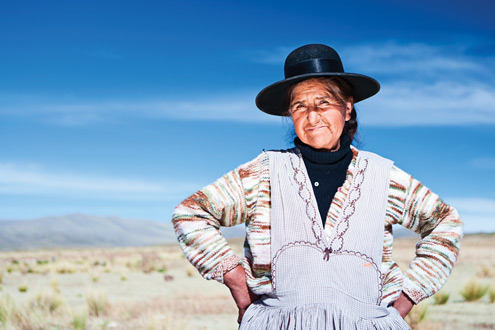Cristiana Panicco sees service learning as the future of education
At a time where uncertainty is one of the most commonly used words in the media, investment in education has become just as important. Why? Because it is even more important during these times that people with a good sense of direction start looking at the bigger picture. Instead of looking to make a quick buck, we should follow the example of the Chinese who are renowned for making investments that will only come to fruition years and years later. Education is the most crucial tool at the moment, as the people who are currently on their educational path will be the leaders of tomorrow, the people who will potentially save or ruin our planet, and whose endeavors will determine the size of our pensions.
So the question arises: are we teaching well, and are we giving students the tools they need to face the future?
Not an easy one to answer. Nevertheless, education is constantly changing and its governing bodies are realizing that learning in a classroom just isn’t good enough any more. This is where study abroad programs and service learning come in. They are possibly the strongest soldiers of the academic army as they really do give something to students that can potentially change them forever, for the better. Studying abroad or going on a faculty-led program is a fantastic way to keep up with the syllabus whilst experiencing new cultures, new languages, even a new life. It brings a tidal wave of new input, ideas and excitement into the students’ and faculty’s lives while allowing them to make comparisons with life back home and thus bring back improvements.
However, is studying abroad like studying back home, just in a different country?
No it isn’t. This is where service learning comes in. The idea is that students engage in projects outside the classroom that can improve the community surrounding them. It gives an array of extra opportunities that go far beyond a normal syllabus. Students and faculty get the chance to truly interact with the local community, they savor a different way of doing things and they get the kind of work experience that will start preparing them (or enriching in the faculty’s case) for whatever their future has coming.
The biggest problem with education has always been the gap between studying a book and putting its teachings into daily work and practice. But when proper service learning projects are embedded into the study abroad experience, the problem is overcome.
There are institutions all over the world that are already taking this approach. A good example is the CGS program organized by the University of Denver that helps students going abroad for part of their semester by eliminating any additional university cost.
The suitability of practical work also depends on the course content as some subjects are easier to “play with” then others. Environmental studies, for instance, have a history of great service learning programs that have been organized for years (see environmental studies in Freiburg, Germany). Unfortunately though, not everyone is yet ‘with the program,’ so it’s not always easy to find institutions that can work the magic of combining the classroom with projects that have a direct impact on the surrounding community. At Sant’Anna Institute — Sorrento Lingue (SASL), a12 year-old institute in the heart of Southern Italy, we have managed to propose plans for the redevelopment of an entire port to its town council by applying the service learning concept with an architecture and business group from the U.S. (Alfred State College, New York). The students, who spent a semester there, had the satisfaction of seeing their work put into practice by local architects and businesses to improve the area.
The project included a new lighthouse, an entertainment area with a stage overlooking the bay, and the redevelopment of some ruined buildings to create a new shopping and leisure center. The town’s Mayor could hardly believe the professionalism with which the project had been carried out. He officially announced that the students’ work will be incorporated into the plans for the actual redevelopment of the marina that will take place over the next few months. Many of the architects who attended the presentation agreed that having an outsider’s view of the redevelopment was a distinct advantage and gave a refreshing perspective. The impact that something like this will have on the local area and the invaluable experience for the young students is just the tip of the iceberg. The institute now has an array of other projects and programs aside from architecture and business — digital media ,creative writing and geology — which are already online for the 2011-12 academic year.
If more institutions start moving towards the idea that students can seriously contribute to local communities, the opportunities are truly endless. Erasmus once said “no one respects a talent that is concealed” and talented people are something we needed to keep this world going. If education helps one’s talent come through, service learning is without doubt a tool that will speed up the process and guarantee better qualified people for our ever more demanding future.
Cristiana Panicco is director and president of Sant’Anna Institute-Sorrento Lingue in beautiful Sorrento, Italy. Write her at director@sorrentolingue.it.



